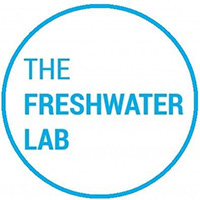The City of Big Infrastructure has a combined sewer of gargantuan scale called Deep Tunnel/ TARP (Tunnel and Reservoir Project) that includes 109 miles of underground caverns and three quarries turned reservoirs (with one more on the way). At a price tag of close to $4 billion, the world’s biggest Deep Tunnel holds water during rain events and staggers its arrival at treatment plants. When capacity becomes overloaded, a dangerous brew of sewage and runoff pours out through aqueducts into the Chicago River and spills into Lake Michigan. It can also back up to inundate city streets and residents’ homes.
By 2029 the Deep Tunnel first dug in 1974 will reach completion. With this final reservoir, TARP is projected to hold 17.45 billion gallons of water and to bring $693 million in flood reduction benefits to 54 communities. Today, it holds 10.95 billion gallons of water. This is enough water to fill Soldier Field 4,800 times or the Willis Tower 27 times.
The Deep Tunnel keeps the city from inundation and captures billions of gallons of water. It answered a federal mandate to protect drinking water, reduce floods and backups, and improve the quality of Illinois waterways. However, the Deep Tunnel/TARP was designed in 1960 based on 1940 rainfall records. Its capacity already fell short when it was constructed. The Deep Tunnel was slated for completion in 1984, meaning that it is 45 years behind schedule. This means that its plan is 45 years behind processes of climate change, urbanization and population growth.
Precipitation in the Midwest has increased by 9% since 1991, the most of any region in the U.S. According to the Fourth National Climate Assessment, the warming atmosphere sparks more evaporation that causes the region’s increased floods, a trend that is projected to continue and erode Midwest landscapes.
Rain storms have given way to rain events in which a high volume of precipitation descends in an abbreviated time period and overwhelms human systems. These events are compounded by the combined sewers of large cities like Chicago in which rain runoff from storm drains blends with everything pouring from domestic and commercial pipes. When relatively clean rain mixes with untreated sewage, all of the water in question becomes waste. You do not want it rising in your basement. The contents of combined sewers move south even during town-leveling floods along the Illinois and Mississippi Rivers.
On the upside, the Deep Tunnel has eliminated 85% of combined sewer overflows (CSOs). But what about the other 15%? Even with the Deep Tunnel, the Chicago Tribune reported increased dumping of wastewater into rivers and the lake. A system still under construction can release untreated human and industrial waste blended with runoff filled with bacteria, toxins, chemicals and debris.
If the Chicago River works like a pipeline, then the Deep Tunnel resembles the oil fields that feed it. Wastewater treatment plants work like oil refineries except that the partially treated water pours back into the canal and becomes waste instead of a product of value. In this way, the Deep Tunnel resembles unproductive oil fields that lose money. But it has the potential to bring great value to the public and to the future.


